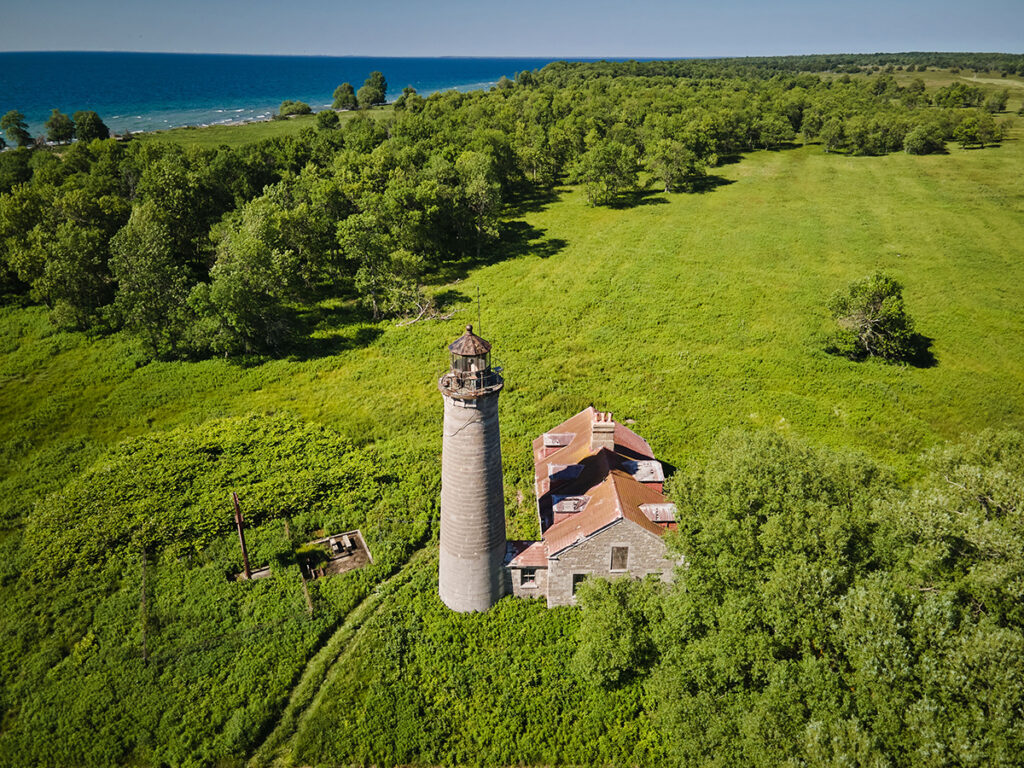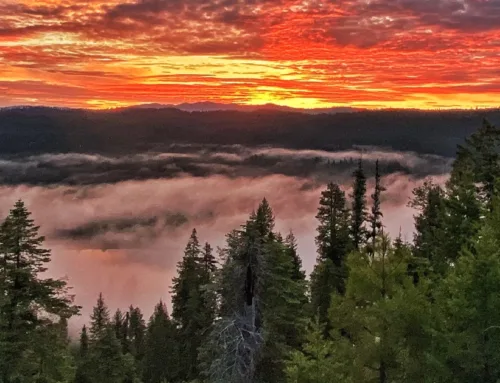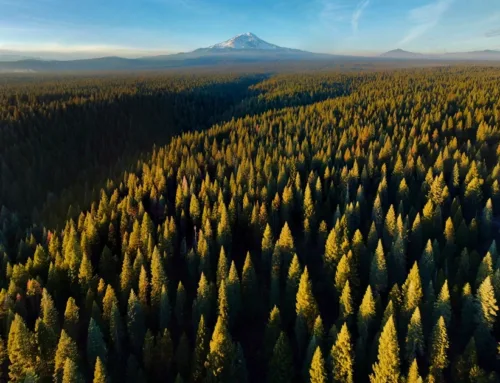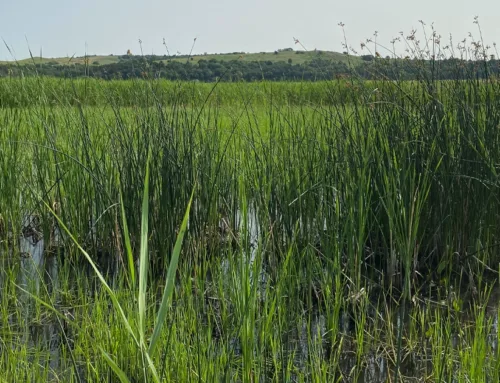Galloo Island
Galloo Island
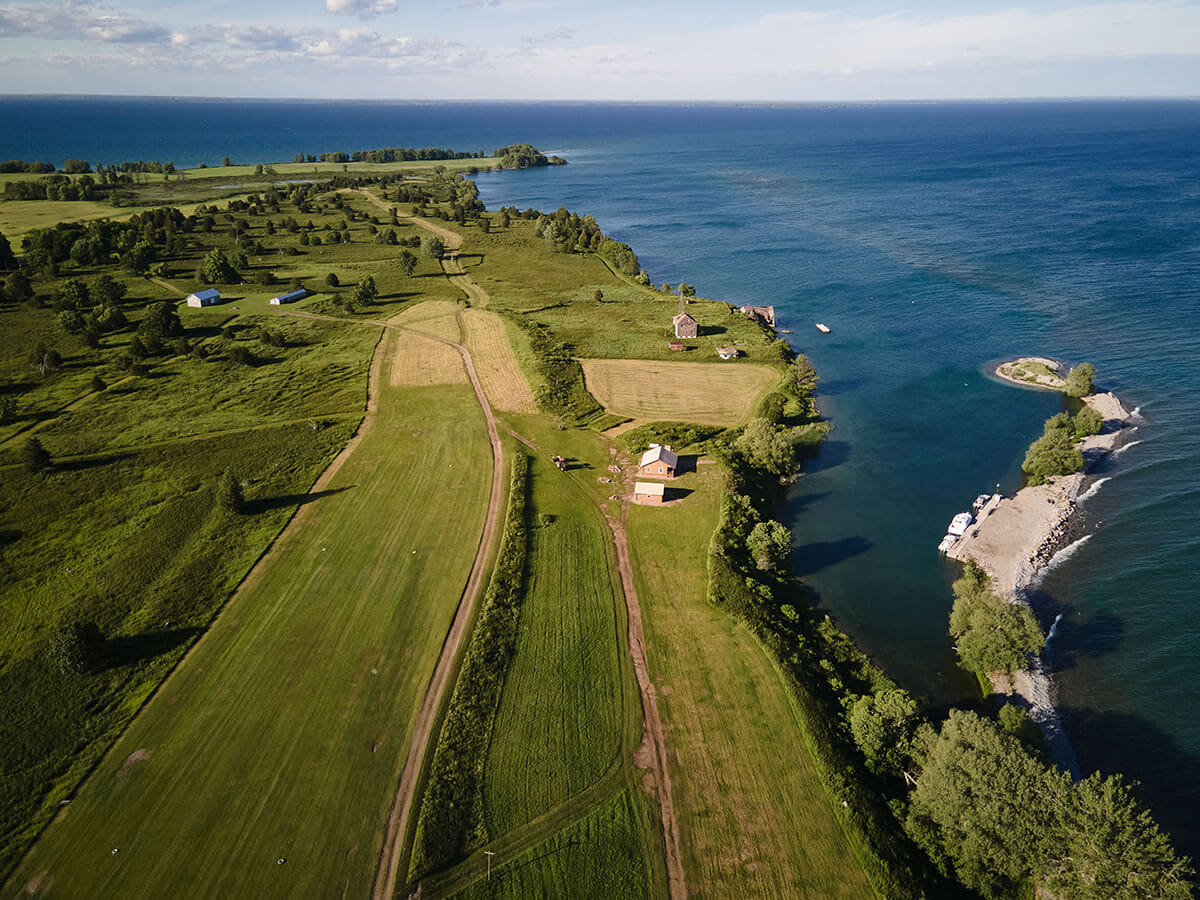
LR GallooIsland 1 Gill Harbor
LR GallooIsland 1 Gill Harbor
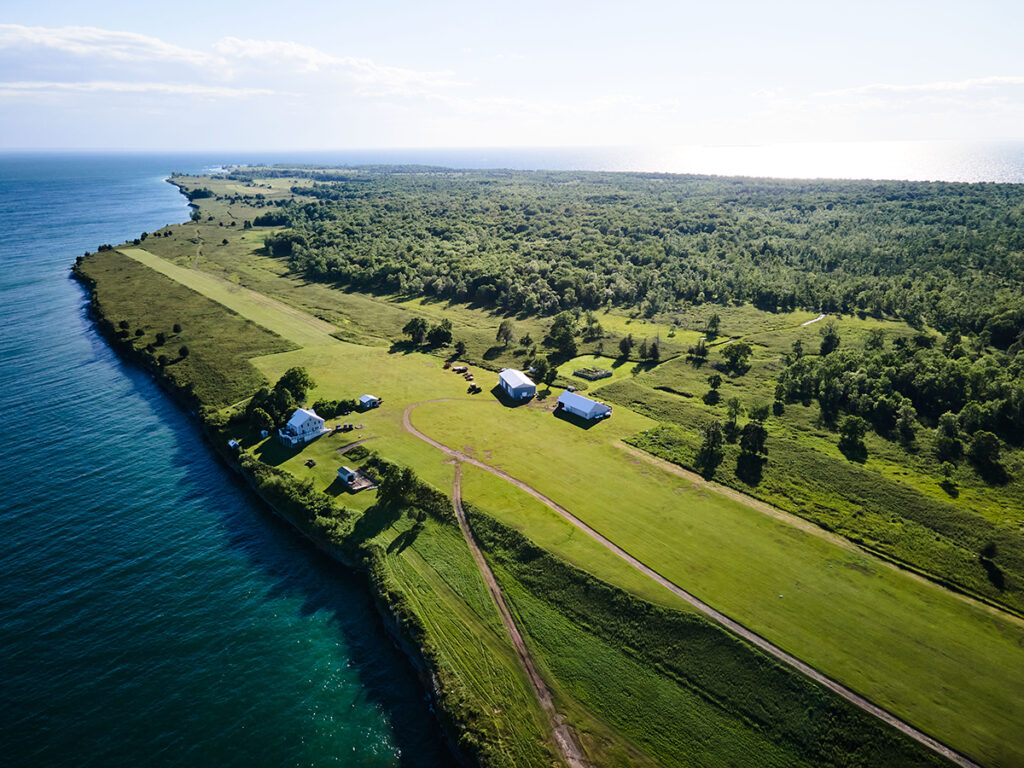
MAIN LODGE The eight-bedroom structure sleeps 20. Built in the 1800s, it was completely refurbished in the 1980s.
More than two decades had passed since Mike Patten and his son John set foot on Galloo Island. Yet both continually obsessed about their island. Although the nearly 2,000-acre sanctuary sits six miles off New York’s northern shores in Lake Ontario, it was always front and center in their minds.
In the 1980s, Galloo belonged to a Patten family company. As impressive as that may sound, it’s a distinction that can be applied to hundreds of thousands of acres in 40 different states. Patten Realty Corporation was America’s first national land development company. Founded in 1966, it ultimately went public and was listed on the New York Stock Exchange. In 1994, it was renamed Bluegreen Corporation.
Mike helped his father create that company, and Galloo was a favorite corporate retreat. For the last decade, Mike and John have built Patten Companies, which is headquartered in Naples, Florida. Although their primary focus has been developments in the South and in Texas, with the change in seasons, the native New Englanders migrate north to the Berkshires of Massachusetts and Woodlife Ranch, their 1,100-acre getaway nestled along the banks of the Green River.
Invariably, their conversations drifted back to Galloo. “John never lost track of it. He was always watching what was going on there. And when Vladi Private Islands dropped the price to below $8 million, he told me, ‘Let’s do it,’” Mike says.
Three longtime family friends and fellow outdoor enthusiasts — Mike Emmons, Davy Roberts, and Kevin Smith — jumped at the chance to throw in as partners. To everyone’s delight, the partnership took title to the island last fall.
ON LAND
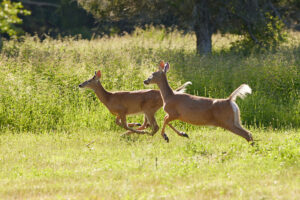
NATIVE WHITETAILS One of the partners’ top priorities is to improve forage opportunities for the deer.
One of the island’s standout features is its diverse array of wildlife. Turkey, pheasant, geese, duck, and birds of prey are a few of the many avian species that call Galloo home. Come September, the island is blanketed in monarch butterflies as they migrate south.
Other critters range from coyote to beaver; the white-tailed deer are exceptional. By June, enormous bucks sport sizeable, velvety horns.
“There is nothing like this in the United States — an island with this kind of deer herd,” Mike says.
Galloo’s whitetails enjoy ample room to forage, feed, and breed. The island is 4.5 miles long and 1.5 miles wide. All told, it encompasses more than three square miles and has 11 miles of shoreline.
Thanks to Mother Nature, the herd’s natural feeding grounds are lush and plentiful. Yet supplemental feeding is a necessity. If Northern New York’s notoriously harsh winter weather isn’t enough of a challenge, consider the effects of the subzero gusts that scream off the lake during the dark days of wintertime.
AT SEA
The waters of Lake Ontario are similarly bountiful. “It’s the best smallmouth bass fishing in America,” Mike says. The story of this unusual occurrence deserves to be shared.
Decades ago, when Mike and John Patten first wet a hook in the waters off Galloo, a typical smallmouth bass weighed two or three pounds. Today, four- and five-pounders are routine, and six- and seven-pounders are regularly reeled in.
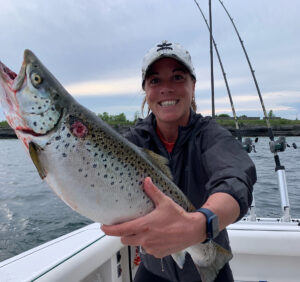
TROPHY CATCH Sam Bartlett landed this monster 12-pound brown trout 50 yards offshore.
Credit an odd little fish called the round goby for this upgrade. In the early 1990s, this bottom feeder hitched a ride across the Atlantic in the ballast water of transoceanic ships departing the Black and Caspian Seas of Eastern Europe. Not only did the round goby thrive in all five of the Great Lakes, it flourished. In some areas, it achieved densities of 100 fish per square meter. Of equal importance is that Galloo’s rocky and sandy shores are the goby’s preferred feeding grounds, a fact much appreciated by native smallmouth bass. “Ontario’s most unwanted invasive species is our favorite,” Mike says.
HISTORY
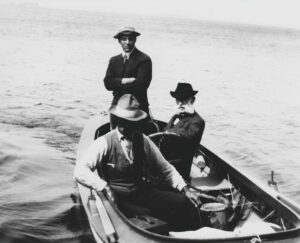
HIS EXCELLENCY Secretary of State John Foster (seated right) catches a ride to Galloo from Will Stevens (standing) onboard The Duke. Foster, his son-in-law Robert Lansing, and his grandson John Foster Dulles all served as US secretaries of state. Another grandson, Allen Dulles, served as CIA director at the height of the Cold War from 1953 to 1961. All four regularly trekked to Galloo.
Despite its remote setting, Galloo Island has long been recognized for its strategic placement through the centuries. During the French and Indian War (1754–1763), the Saint Lawrence River and Lake Ontario were key theaters for British and French forces. A half-century later during the War of 1812, the Royal Navy was sparring with the frigates of the US Navy in the same waters. Nearby Sackets Harbor became Great Lakes headquarters for the US Navy, and its shipyard employed thousands. In 1819, the vital placement of Galloo was further emphasized when Congress authorized $12,500 to fund the construction of the Galloo Island Lighthouse. A century later during the long thirsty years of the Prohibition Era, Galloo was a way station for rumrunners spiriting hooch across the lake from Canadian distilleries. More recently, Galloo and its neighbors, Stony Island and Association Island, have served as high-end corporate retreats: Stony, for Phillips 66, and Association, for General Electric.
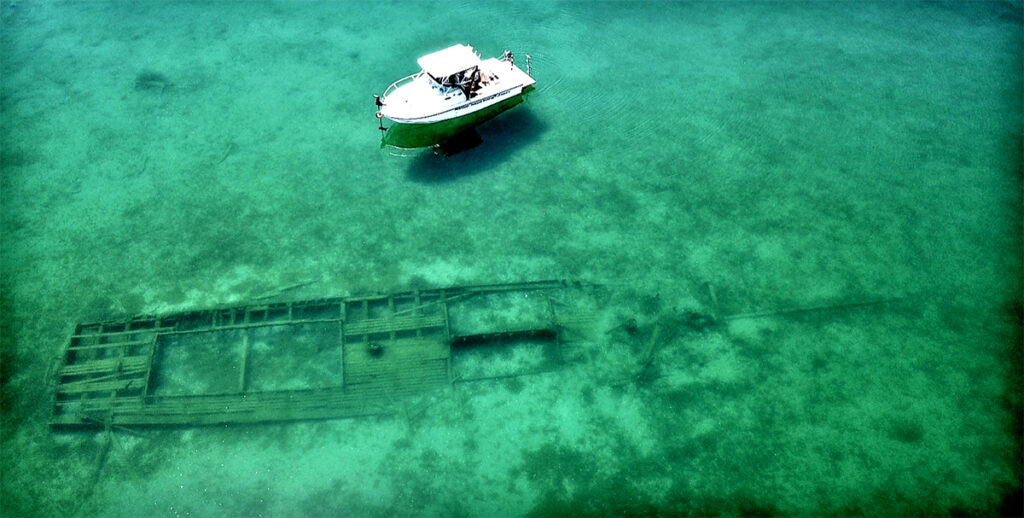
SUNKEN TREASURE Hundreds of shipwrecks litter the waters of Lake Ontario, including one discovered off Galloo in June.
DAVY JONES’S LOCKER
One of the many benefits of their decades-long ties to Galloo has been the Pattens’ rewarding relationship with the island’s longtime caretakers, Rick Hartman and Roxanne Grant. For the past 15 years, the couple has lived on Galloo most of the year — essentially, the habitable seasons. During spring, summer, and fall, the couple commutes to and from the island by boat and by airplane.
While on one of her commutes, Roxanne noticed what appeared to be the remnants of sunken wreckage along a shoal just off the island. Finally, her curiosity got the better of her, and she mentioned it to her son.
Prompted by his mother, Brandon Kampnich began investigating the framework of the wooden ship in June 2022. He was intrigued by what little he could make out, and he decided to alert Tim Caza, a US Coast Guard captain and an active scuba diver who specializes in long-lost ships. Tim’s 45 years’ experience in the waters of the Great Lakes, the Caribbean, and other venues made him the ideal choice to scout Roxanne’s find.
Tim and his partner, Dennis Gerber, dove the site and confirmed that it was a previously undiscovered double-masted daggerboard scow schooner like the ones that plied the Great Lakes in the early 1800s.
This discovery compliments Brandon’s other finds on Galloo, including Civil War and Prohibition-era coins and tokens, uniform buttons, musket balls, and a gold engagement ring. The shipwreck also lends credence to efforts to establish a marine sanctuary in the eastern basin of Lake Ontario to protect shipwrecks discovered since the arrival of a second invasive species, the zebra mussel. The tiny mollusks were introduced to the Great Lakes by ocean freighters’ bilge water. The mussels not only filter the murky lakes’ waters, but their shells, crushed by lake waves, have created white sandy beaches where none previously existed.
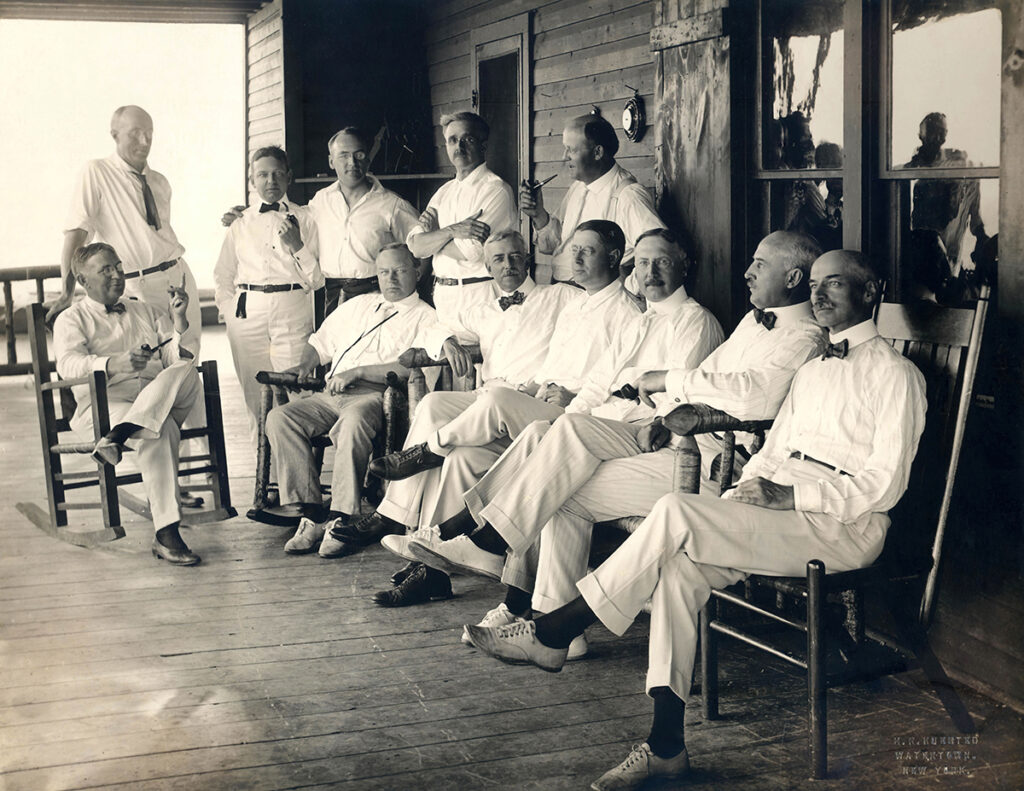
POWER PLAYERS The Fortnightly Club welcomed a host of VIPs including secretaries of state and a director of the CIA.
FORTNIGHTLY CLUB
One of the most astonishing chapters in the history of Galloo — or any other venue for that matter — is the existence of the Fortnightly Club.
Established in a rustic farmhouse at the north end of the island, this invitation-only club catered to a gentlemanly sort that celebrated the outdoors lifestyle found on Galloo. The club’s name was derived from the two weeks that the all-male membership bunked dormitory-style in the lodge each year. The organization itself can be traced back to Woodrow Wilson’s secretary of state, Robert Lansing (1864–1928), a native of Watertown, a New York port just minutes from Galloo.
Lansing was not the only big shot to belong to the Fortnightly Club. His father-in-law happened to be President Benjamin Harrison’s secretary of state, John Foster (1836–1917). His nephews — also Fortnightly members, of course — included two of America’s leading Cold Warriors: Secretary of State John Foster Dulles (1888–1959), who served under Dwight Eisenhower; and CIA Director Allen Dulles (1893–1969), who also served under Ike. Countless other prominent politicos were members, including Judge Nicholas Yost of Watertown, whose son Charles would go on to become the ninth US Ambassador to the United Nations. Clearly, this was no ordinary gathering.
In the years that followed, the clubhouse was owned by H. Edmund Machold (1880–1967), a long-time member of the New York State Assembly who went on to serve as speaker of the lower house.
While exploring the great room of the lodge with its massive island stone fireplace dating back to 1908, Mike and John Patten discovered a small handmade table. Upon further inspection, they determined it was featured in a photograph from the early 1920s that included Secretary Lansing and his fellow members. Still in good condition after 100 years, it is now on display at a small museum in nearby Henderson, New York.
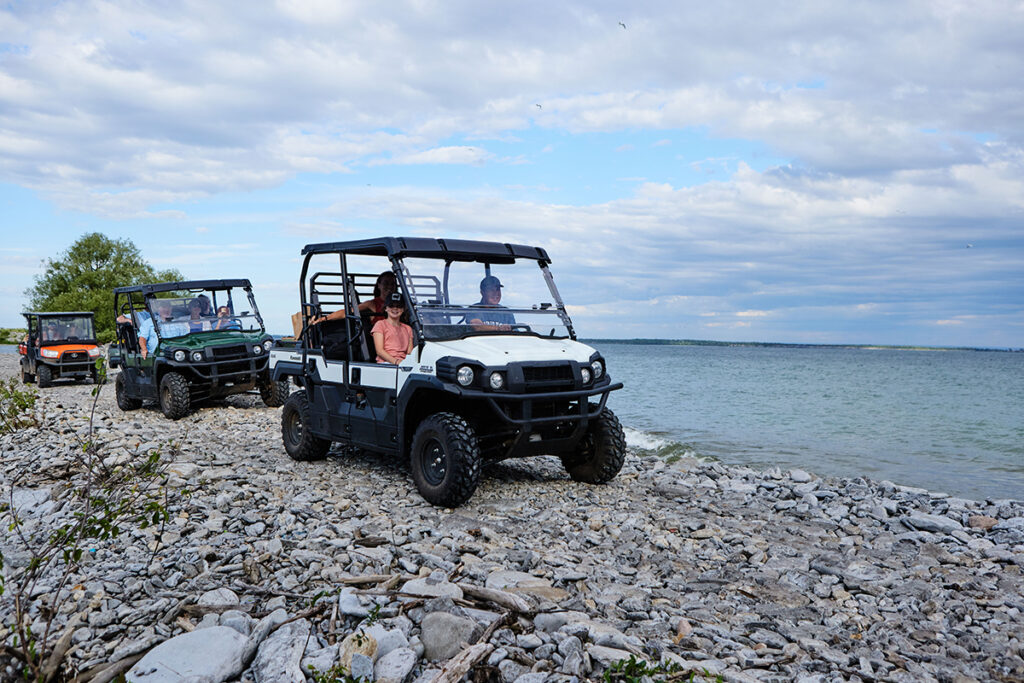
NEW FRONTIER For the Pattens, their return to Galloo is the start of an amazing adventure
NEXT STEPS
Given the dilapidated condition of many of the structures on the island, the Pattens anticipate employing a bevy of full- and part-time contractors to initiate the many improvements required to stabilize as well as improve current infrastructure. Owning a 2,000-acre landmark is many things. Cheap is not one of them.
Numerous additional challenges loom from restoring wildlife habitat to taming farmland that has been overtaken by invasive species. Repurposing vintage building materials will be a puzzle all by itself.
In addition to extensive renovations, the partners are committed to bringing the land back to life. Decades of absentee ownership have taken a toll.
“No one has managed the timber,” Mike says. “The deer need food plots. The meadows are full of who knows how many different invasive species. The whole place needs a lot of TLC. Fortunately for me and John, we’ve got three great partners in Mike, Davy, and Kevin. These guys know land, and they all know what it will take to get Galloo back up to speed. Trust me — we’ll make it happen.”

